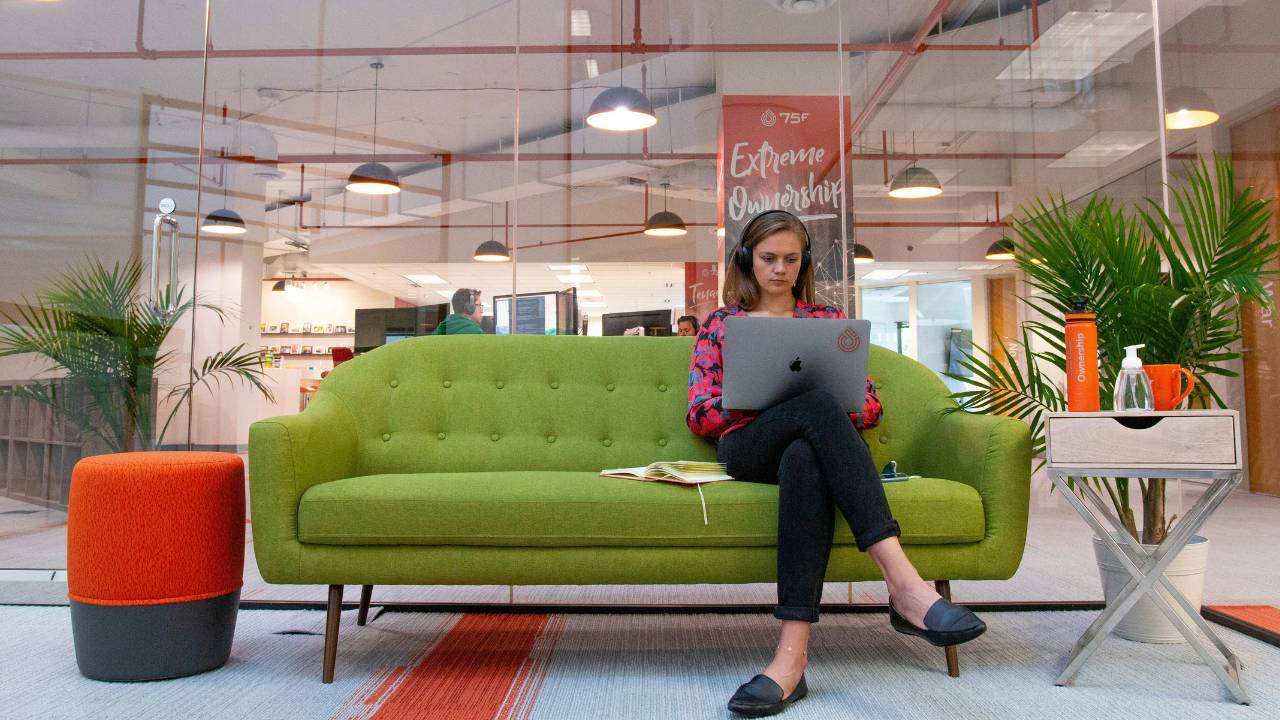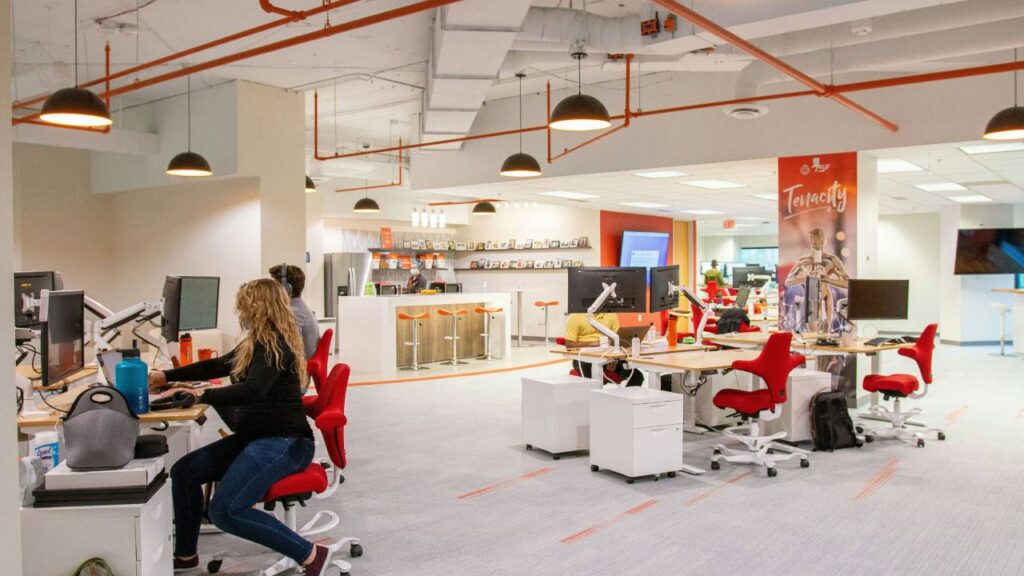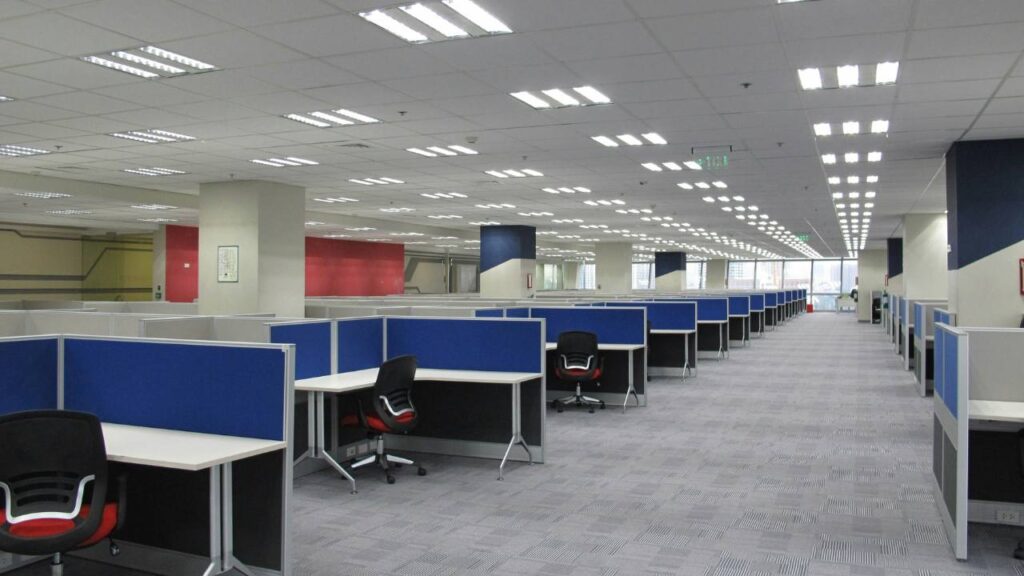
Designing the ultimate smart office now goes far beyond aesthetics, as it demands seamless integration of digital infrastructure, spatial adaptability, and advanced materials. Workspaces today are shaped not just by elegant surfaces but also by attention to reliable connectivity, flexible space planning, and effective collaboration among teams in both physical and digital environments. As a result, the modern smart office is a carefully balanced environment where every element—from layout to technology—supports productivity and adaptability.
Marrying Material Design with IT Needs

The choice of building materials has a direct impact on IT systems within a smart office. Material selection affects network infrastructure, wireless signal quality, and the ease of technology upgrades over time.
Flooring plays a significant role in IT planning. Raised floors allow for underfloor cabling, making it easier to route data and power lines discreetly, and can simplify maintenance when access is required. Certain floor types also improve cooling efficiency by facilitating airflow management.
Hard surfaces like terrazzo flooring are popular in modern office spaces because they offer durability, a stylish appearance, and long lifespans, even in areas with heavy use. These materials can withstand the movement of office chairs, and equipment and frequent cleaning without showing much wear.
However, integrating IT with hard-surface floors introduces specific considerations. Acoustics can be an issue, as sound may reflect and amplify noise levels in open-plan areas. Additionally, reflective surfaces can affect heat dissipation from equipment, which may require adjustments to cooling systems.
When planning a smart office, it is essential to coordinate material design with IT needs from the start. Discussing flooring choices with both architects and IT planners ensures that the finished space supports both the look and function required for modern work environments.
Futureproofing with Flexible Infrastructure
A smart office requires an infrastructure that can evolve with changing technology and business needs. Scalability and adaptability are essential to ensure that as a company grows, its technical environment remains efficient and effective. Choosing flexible solutions from the beginning avoids costly overhauls later.
Structured cabling forms the foundation of any adaptable workspace. By organising cables efficiently and consistently, offices gain the ability to reconfigure layouts and connect new devices without major disruption. Server placement also matters—centralised, accessible locations make it easier to add capacity or replace hardware as demands shift.
Effective smart power management helps control energy use and ensures vital systems keep running, even during outages. Modern solutions allow for real-time monitoring, helping facilities teams identify inefficiencies and quickly respond to faults.
Cloud computing is a crucial component of flexible infrastructure. It reduces reliance on on-site hardware, simplifies software deployment and streamlines data management. This shift enables seamless scaling of both remote work options and storage needs, supporting business continuity.
The Role of Layout and Zoning in Smart Office Efficiency

The layout of a smart office plays a significant role in both IT functionality and user experience. Well-considered spatial design makes it easier for employees to move, collaborate, and access essential technologies without disruption.
Zoning is central to maintaining an efficient office environment. Spaces are typically divided into areas designated for collaboration, zones for quiet work, and areas optimised for specific networking needs. Each zone supports different requirements, from open-plan desks to private rooms, all contributing to productivity and comfort.
Flooring choices and partition design can impact wireless signal quality and sound management. Strategically placed carpets may help absorb sound in collaborative areas, while partitions reduce interference and support focused work.
Modern smart office layouts also benefit from IT/OT convergence—the alignment of information technology (IT) and operational technology (OT)—to improve connectivity, automate building systems, and streamline workplace interactions. This convergence allows for smarter integration between networked devices and environmental controls, enhancing responsiveness and system efficiency.
Device placement throughout the office must align with power distribution and connectivity needs. Careful planning ensures strong Wi-Fi coverage, minimises cable clutter, and supports a more seamless workflow for teams.
Attention to these details supports a smarter, more adaptable work environment. Staff productivity and IT reliability benefit when layout, zoning, and technology integration are thoughtfully addressed.
Bringing the Outdoors In – And the Indoors Out
Companies are increasingly interested in blending the boundaries between indoor and outdoor work environments. This approach is gaining momentum as organisations look for ways to promote staff wellbeing and support new patterns of hybrid working. Employers now see green spaces and terraces as valuable areas, not just decorative additions.
The integration of technology is central to this trend, merging natural elements with smart office solutions. Features like remote-controlled lighting, automated blinds, and responsive temperature controls allow employees to work comfortably in open-air settings. Outdoor extension plans are regularly considered during office renovations and new builds.
Research increasingly highlights the positive effect of biophilic work design—incorporating nature into the workspace—which has been shown to improve employee focus, reduce stress, and boost overall satisfaction. As smart offices embrace outdoor connectivity, this nature-driven approach complements both well-being and productivity goals.
IT requirements are crucial in these spaces. Secure, reliable outdoor Wi-Fi ensures strong connectivity for meetings or remote collaboration. Weatherproof power outlets and suitable lighting help maintain productivity even when the weather changes. Managing noise levels also becomes important, particularly when outdoor areas are near busy roads or communal spaces.
Combining these elements encourages adaptability within the workplace. The resulting environment supports both focus and collaboration, catering to a wide range of work preferences.
Security, Sustainability, and Smart Monitoring

Modern smart offices must balance robust security with sustainability. Smart access control systems, such as biometric scanners or RFID badges, protect sensitive areas and log entries for audit purposes.
Energy-efficient HVAC systems adjust temperatures automatically based on occupancy, reducing unnecessary energy usage. This aligns with eco-friendly building materials, such as sustainable flooring already discussed.
Smart lighting combines motion sensors and adaptive settings to reduce power consumption. This promotes both energy savings and occupant comfort.
Environmental monitoring tools track air quality, temperature, and humidity in real-time. These sensors help maintain productivity while supporting wellness goals.
Cloud platforms provide a central dashboard, letting teams manage access, environmental controls, and security alerts remotely. Data collected by monitoring tools can inform further upgrades, ensuring the space stays adaptable.
| Feature | Benefit |
| Smart Lighting | Cuts energy use, enhances ambience |
| Energy-efficient HVAC | Lowers utility costs, boosts comfort |
| Access Control | Strengthens security |
| Environmental Sensors | Supports health, enables reporting |
Cloud integration supports automation and makes it easier to monitor building performance from anywhere. This supports the ongoing goals of security, sustainability, and space efficiency in the smart office.
Conclusion
Designing a smart office extends beyond simply adding new technology; it requires thoughtful planning that begins with understanding genuine business needs. Teams should look at their current office environment and carefully consider how each aspect—from layout to digital systems—contributes to productivity and satisfaction. With a clear strategy in place, organisations can ensure future upgrades deliver meaningful value and create a truly integrated workspace.

